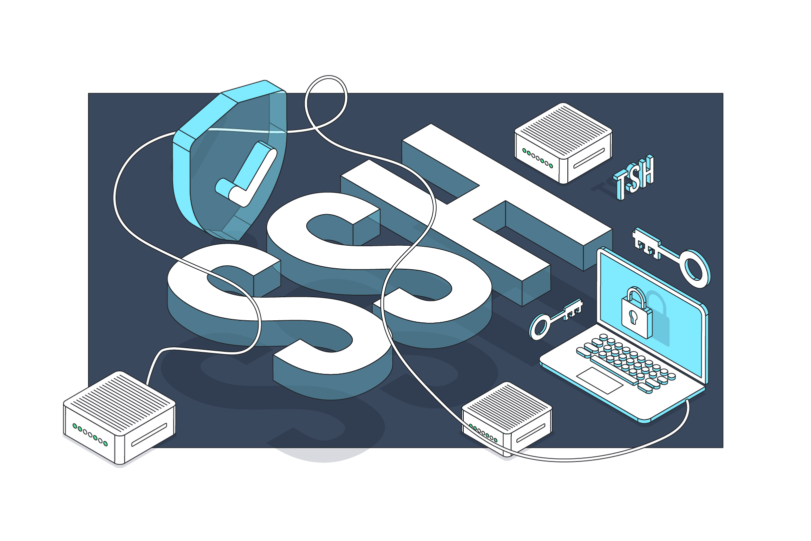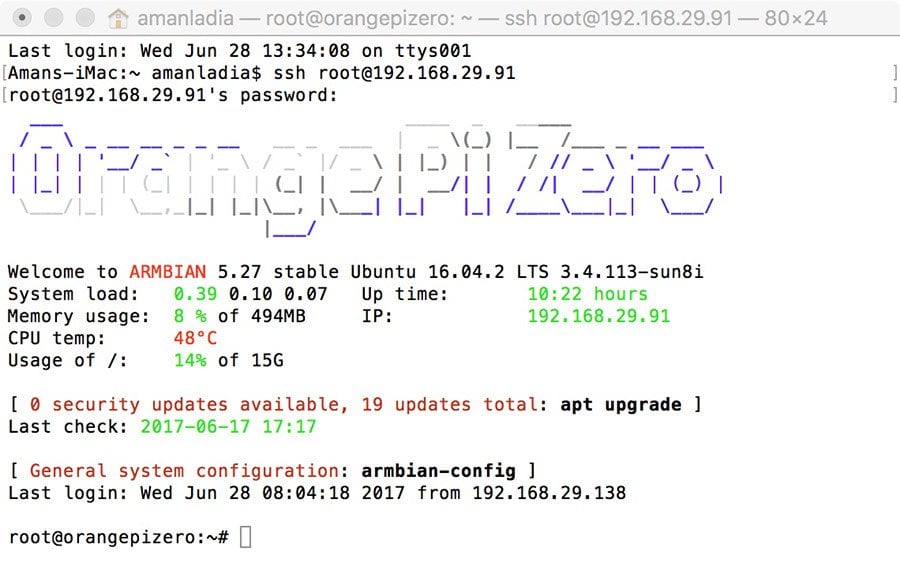Hey there, tech enthusiasts! If you're diving into the world of remote access and IoT management, you're in the right place. In this RemoteIoT Web SSH Tutorial, we’re going to break down everything you need to know about securely accessing your devices from anywhere in the world. Whether you're a beginner or an advanced user, this guide will take you through the basics, best practices, and advanced techniques for remote SSH connections. So, buckle up and let’s get started!
Nowadays, with the rise of smart devices and the Internet of Things (IoT), remote access has become a necessity rather than a luxury. Whether it's managing servers, troubleshooting devices, or simply monitoring your home network, having a reliable method to connect remotely is crucial. RemoteIoT Web SSH is one of the most secure and efficient ways to achieve this, and by the end of this tutorial, you'll be a pro at it.
Before we dive into the nitty-gritty, let's address why mastering SSH is so important. SSH, or Secure Shell, is like the Swiss Army knife of remote access tools. It provides encryption, authentication, and secure communication between devices. With the help of RemoteIoT Web SSH, you can manage your devices from anywhere, anytime—without compromising security. Let's make this journey as smooth as possible!
Read also:Jim Cramer Regrets Trusting Trump The Untold Story
What is RemoteIoT Web SSH?
Alright, let’s start with the basics. RemoteIoT Web SSH is a web-based platform that allows users to establish secure SSH connections to remote devices over the internet. Unlike traditional SSH clients, which require dedicated software, RemoteIoT Web SSH operates directly through your browser. This means you can access your devices from any device with an internet connection—no downloads or installations required.
Here’s why RemoteIoT Web SSH stands out:
- Web-Based: Access your devices from any browser without installing additional software.
- Secure: Utilizes SSH protocols to ensure encrypted and authenticated communication.
- Convenient: Perfect for managing IoT devices, servers, and routers from anywhere in the world.
- Scalable: Supports multiple devices and users, making it ideal for both personal and enterprise use.
In short, RemoteIoT Web SSH is your go-to solution for managing IoT devices remotely while maintaining top-notch security. Let’s explore how it works in the next section.
How Does RemoteIoT Web SSH Work?
RemoteIoT Web SSH operates on a client-server model. Here’s a quick breakdown of how it works:
Step 1: The user connects to the RemoteIoT platform via a web browser. This platform acts as an intermediary between the user and the target device.
Step 2: The platform establishes an SSH tunnel to the target device using secure protocols. This ensures that all communication is encrypted and protected from unauthorized access.
Read also:Are The Ninja Kidz Mormon Unveiling The Truth Behind The Band
Step 3: Once the connection is established, the user can interact with the device as if they were physically present.
This process is seamless and ensures that your data remains secure at all times. Let’s dive deeper into the setup process in the next section.
Setting Up RemoteIoT Web SSH
Setting up RemoteIoT Web SSH is a straightforward process. Follow these steps to get started:
Step 1: Create an Account
The first step is to create an account on the RemoteIoT platform. Simply visit their website, sign up for an account, and verify your email address. This usually takes just a few minutes.
Step 2: Add Your Devices
Once your account is set up, you’ll need to add the devices you want to manage. This involves installing a small agent on each device, which allows the platform to establish a secure connection. Most platforms provide detailed instructions for this process, so don’t worry if it sounds complicated.
Step 3: Configure SSH Settings
After adding your devices, you’ll need to configure the SSH settings. This includes setting up authentication methods, such as passwords or SSH keys, and defining access permissions. It’s important to use strong authentication methods to ensure maximum security.
Step 4: Test the Connection
Finally, test the connection to ensure everything is working as expected. Open your web browser, log in to the RemoteIoT platform, and try connecting to one of your devices. If everything is set up correctly, you should be able to access the device’s terminal and execute commands.
That’s it! You’re now ready to start managing your devices remotely. Let’s move on to some best practices for using RemoteIoT Web SSH.
Best Practices for Using RemoteIoT Web SSH
While RemoteIoT Web SSH is a powerful tool, it’s important to use it responsibly. Here are some best practices to keep in mind:
- Use Strong Authentication: Always use strong passwords or SSH keys to authenticate your connections. Avoid using default credentials, as they can be easily exploited.
- Enable Two-Factor Authentication: Add an extra layer of security by enabling two-factor authentication (2FA) for your account.
- Limit Access: Restrict access to only authorized users and devices. This minimizes the risk of unauthorized access.
- Keep Software Updated: Regularly update the RemoteIoT agent and your devices’ firmware to ensure you have the latest security patches.
- Monitor Activity: Keep an eye on your connection logs to detect any suspicious activity. Most platforms provide tools for monitoring and auditing connections.
By following these best practices, you can ensure that your RemoteIoT Web SSH setup is as secure as possible.
Common Issues and Troubleshooting
Even with the best setup, issues can arise. Here are some common problems users encounter with RemoteIoT Web SSH and how to troubleshoot them:
Issue 1: Connection Timeout
If you’re experiencing connection timeouts, it could be due to network issues or firewall restrictions. Check your network settings and ensure that the necessary ports are open. Additionally, verify that the RemoteIoT agent is running on your device.
Issue 2: Authentication Failure
Authentication failures are often caused by incorrect credentials or misconfigured SSH settings. Double-check your username, password, and SSH keys to ensure they are correct. If the issue persists, try resetting your authentication settings.
Issue 3: Slow Performance
Slow performance can be caused by a variety of factors, including network latency or resource constraints on your device. Try optimizing your network settings or upgrading your hardware if necessary.
By addressing these issues promptly, you can ensure a smooth and uninterrupted experience with RemoteIoT Web SSH.
Advanced Techniques for RemoteIoT Web SSH
Once you’ve mastered the basics, it’s time to explore some advanced techniques for RemoteIoT Web SSH. Here are a few tips to take your skills to the next level:
Tunneling
Tunneling allows you to securely transfer data between devices over the internet. This is particularly useful for accessing sensitive information or managing multiple devices simultaneously. Most RemoteIoT platforms support tunneling, so be sure to explore this feature.
Automation
Automation can save you a ton of time and effort. Use scripts and automation tools to streamline repetitive tasks, such as backups or updates. Many platforms offer integrations with popular automation tools, making it easy to set up and manage.
Monitoring
Monitoring your devices in real-time can help you detect and address issues before they become major problems. Most RemoteIoT platforms provide robust monitoring tools, so take advantage of them to keep your devices running smoothly.
These advanced techniques can help you get the most out of RemoteIoT Web SSH and take your remote management skills to the next level.
Security Considerations for RemoteIoT Web SSH
Security is paramount when it comes to remote access. Here are some key considerations to keep in mind:
- Encryption: Ensure that all communication between your devices and the RemoteIoT platform is encrypted using strong algorithms.
- Access Control: Implement strict access controls to ensure that only authorized users can access your devices.
- Regular Audits: Conduct regular audits of your connections and activity logs to detect any potential security threats.
- Software Updates: Keep all software and firmware up to date to protect against vulnerabilities.
By prioritizing security, you can ensure that your RemoteIoT Web SSH setup remains safe and reliable.
Real-World Applications of RemoteIoT Web SSH
RemoteIoT Web SSH has a wide range of applications across various industries. Here are a few examples:
Home Automation
With the rise of smart homes, RemoteIoT Web SSH is an excellent tool for managing IoT devices such as smart lights, thermostats, and security systems. You can monitor and control these devices from anywhere, ensuring maximum convenience and security.
Enterprise IT Management
For businesses, RemoteIoT Web SSH is a powerful solution for managing servers, routers, and other critical infrastructure. It allows IT teams to troubleshoot and resolve issues remotely, saving time and resources.
Remote Work
In today’s remote work environment, RemoteIoT Web SSH is essential for accessing workstations and servers from home. It provides a secure and efficient way to collaborate and stay productive, no matter where you are.
These real-world applications demonstrate the versatility and value of RemoteIoT Web SSH in various contexts.
Conclusion
And there you have it, folks! A comprehensive guide to mastering RemoteIoT Web SSH. From setting up your account to exploring advanced techniques, this tutorial has covered everything you need to know about secure remote access. Remember, security is key, so always follow best practices and stay vigilant.
Now it’s your turn to put this knowledge into action. Whether you’re managing IoT devices, servers, or home automation systems, RemoteIoT Web SSH is your ultimate tool for remote access. Don’t forget to share your experiences and tips in the comments below. And if you found this tutorial helpful, be sure to check out our other articles for more tech insights!
Stay curious, stay secure, and keep exploring the world of IoT and remote access. Until next time!
Table of Contents
- What is RemoteIoT Web SSH?
- How Does RemoteIoT Web SSH Work?
- Setting Up RemoteIoT Web SSH
- Best Practices for Using RemoteIoT Web SSH
- Common Issues and Troubleshooting
- Advanced Techniques for RemoteIoT Web SSH
- Security Considerations for RemoteIoT Web SSH
- Real-World Applications of RemoteIoT Web SSH
- Conclusion


